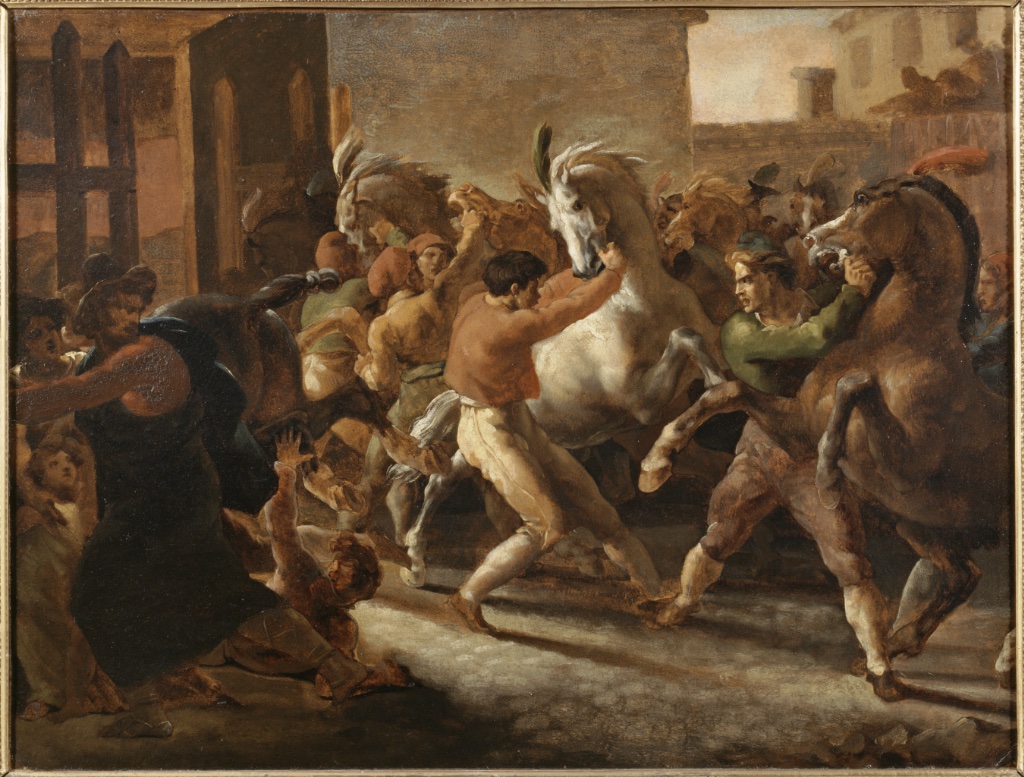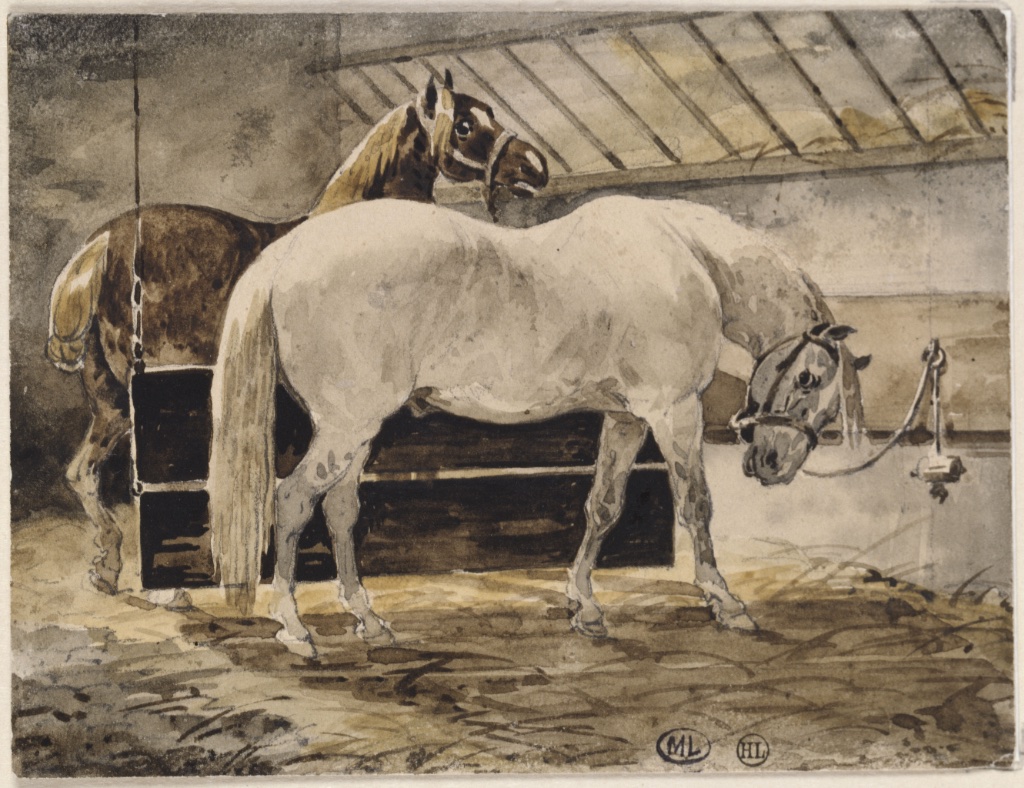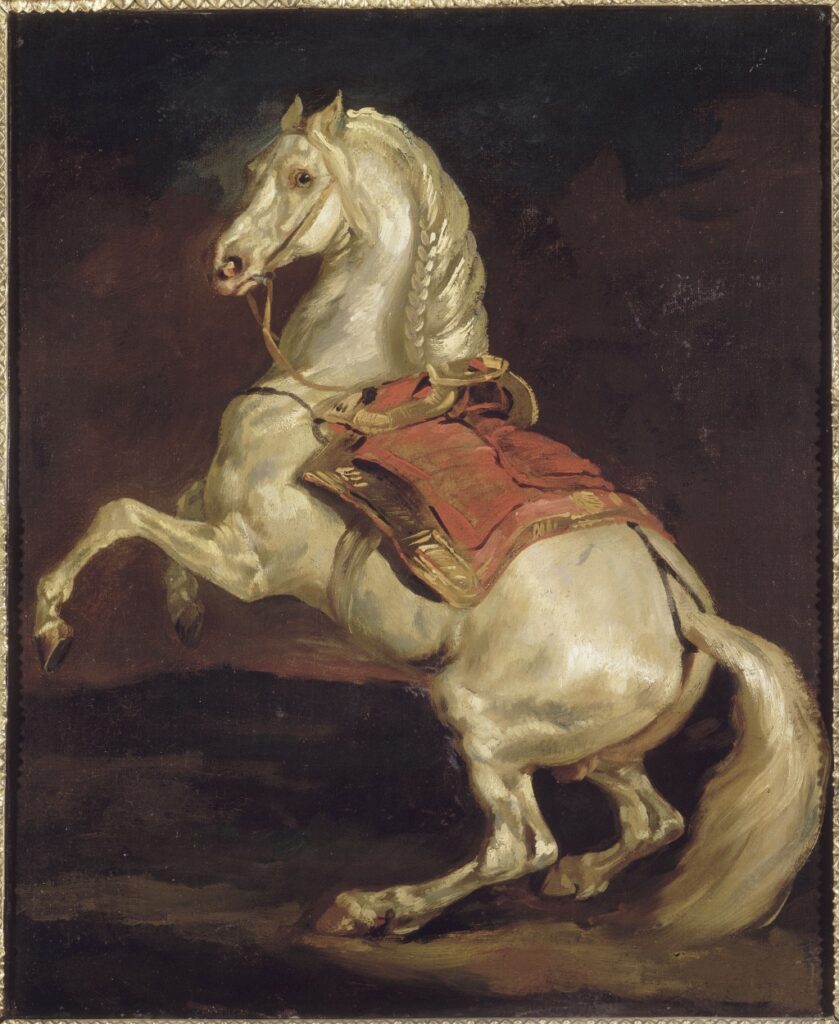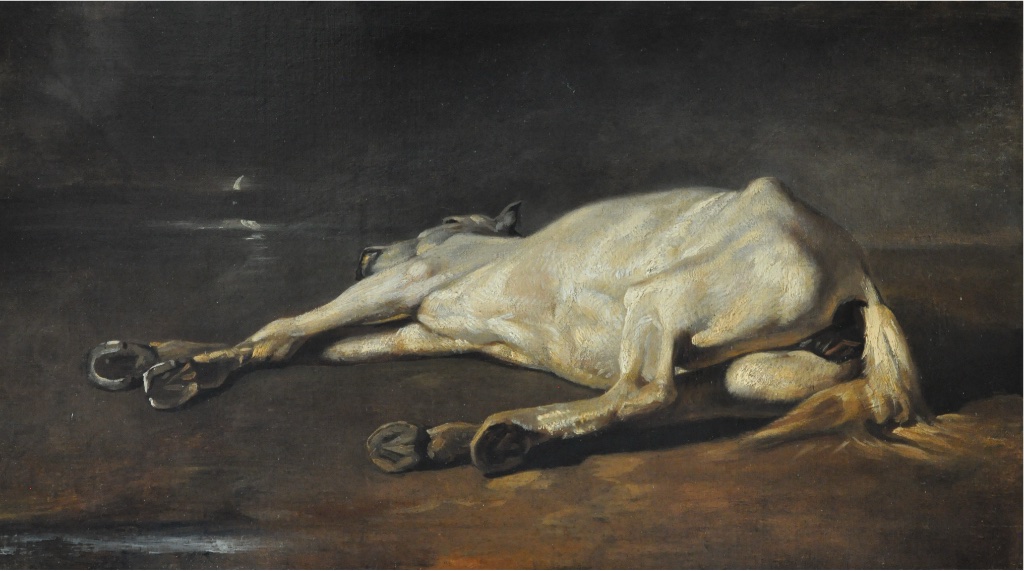I wonder how many of the equestrian teams at this summer’s Paris Olympics managed to take time off to see the exhibition of Théodore Géricault’s paintings, “Les Chevaux de Géricault” (“Géricault’s Horses”) at the Musée de la Vie Romantique (due to end September 15), but if some did, they would have been treated to an extraordinary array of equine studies by the artist best known for his magnificent painting “The Raft of the Medusa,” which hangs in the Louvre.
Géricault was a friend and neighbor of the artist Ary Scheffer, whose house is now the home of the museum’s permanent collection, so the location of this special exhibition is singularly appropriate.

Divided into five sections, the exhibition opens with a series of battle paintings in a room labeled “Le Cheval Politique” (“The Political Horse”). My immediate thought was that most of the paintings here would be propaganda tools to celebrate the glories of battle. However, even though his magnificent 1814 study of Napoleon’s favorite horse, Tamerlan, rearing up on his haunches, might suggest this, the opposite seems to be the case in most of the other paintings, which show empathy with the defeated in war –one example is “Cuirassier Blessé Quittant le Feu” (Wounded Soldier Leaving the Battle) – or depict the horrors of Napoleonic warfare with heartbreaking depictions of exhausted horses.

While the first room deals with horses and riders, the second, “L’écurie Sanctuaire” (“The Stable as Sanctuary”), shows horses at ease. I was struck in particular by a very early painting, known as “Les Poitrails” (“Chests”) of three horses standing together looking outward, confident and content. The next two rooms cover the work that Géricault did in Rome and London, respectively. Clearly inspired by ancient Roman art, the painter spent time in Italy in 1816-17, making numerous studies and sketches for an unfinished (and now lost) painting, “La Course de Chevaux Libres” (“The Race of Free Horses”), displaying gorgeously sinuous movement by naked and clothed figures trying to restrain boisterous horses. Géricault’s work in England was dominated by two very different representations of horses, one from the high-society world of horses and jockeys at Epsom racecourse, the other (more poignantly) of horses used for labor in the agricultural countryside.
The final room, “La Mort du Cheval” (“The Death of the Horse”), provides a touching ending to the exhibition. The depictions of dead horses bring to the fore the hundreds of thousands of horses (and soldiers) killed in the Napoleonic wars between 1803 and ’15, and also, in a way, anticipate Géricault’s own death at the early age of 32, in 1822, from complications after several falls from horses required him to spend prolonged periods confined to his bed.
Even though individual paintings are not accompanied by English translations, each room starts with introductory texts in both French and English. As the exhibition ends soon, do rush to see this beautifully curated show before it is too late. And, if the warm weather continues, the museum has a charming outdoor café and garden where you can enjoy the last rays of summer sun.
See our list of Current & Upcoming Exhibitions to find out what else is happening in the Paris art world.
Favorite

